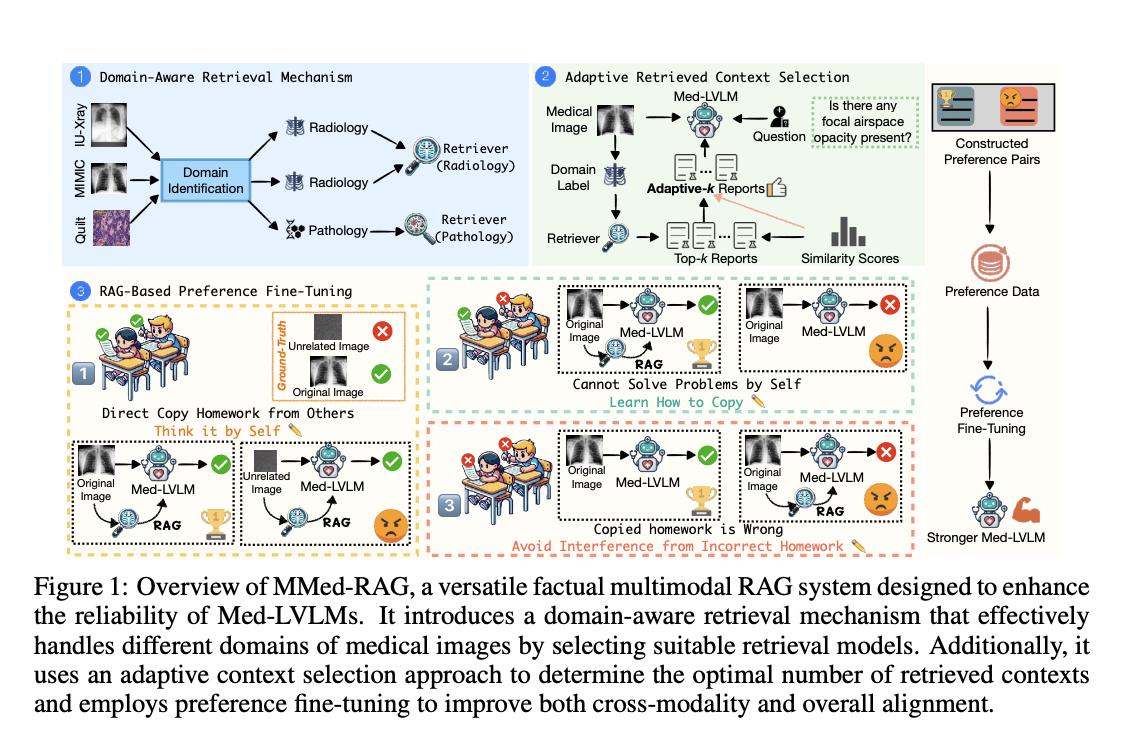
Impact of AI on Healthcare
AI is transforming healthcare, especially in diagnosing diseases and planning treatments. A new approach called Medical Large Vision-Language Models (Med-LVLMs) merges visual and textual data to create advanced diagnostic tools. These models can analyze complex medical images and provide intelligent responses, aiding doctors in making clinical decisions.
Challenges in Adoption
Despite their promise, Med-LVLMs face significant challenges:
- Inaccurate Information: These models can generate incorrect medical information, which could lead to poor patient outcomes.
- Data Quality: There is a lack of large, high-quality labeled medical datasets for training.
- Mismatched Data: The data used for training often differs from what is encountered in real clinical settings, raising reliability concerns.
Current Improvement Strategies
To enhance Med-LVLMs, two main strategies are used:
- Fine-Tuning: Adjusting model parameters using specialized datasets to improve accuracy, though limited data availability is a barrier.
- Retrieval-Augmented Generation (RAG): This technique retrieves external knowledge during inference but struggles to generalize across different medical fields.
Introducing MMed-RAG
Researchers from several universities have developed MMed-RAG, a new system aimed at improving the factual accuracy of Med-LVLMs:
- Domain-Aware Retrieval: This mechanism retrieves information specific to the medical field of the image, ensuring relevant data is used.
- Adaptive Context Selection: This method filters out irrelevant data, enhancing the quality of information retrieved.
- RAG-Based Preference Fine-Tuning: This optimizes the alignment between visual inputs and retrieved information, boosting overall reliability.
Outstanding Results
MMed-RAG was tested on five medical datasets and delivered impressive outcomes:
- 43.8% improvement in factual accuracy.
- 18.5% increase in medical question-answering accuracy.
- 69.1% enhancement in medical report generation.
Key Takeaways
- MMed-RAG significantly boosts factual accuracy across multiple medical datasets.
- The system effectively pairs medical images with relevant contexts, enhancing diagnostic precision.
- Adaptive context selection minimizes irrelevant data retrieval, improving model reliability.
- RAG-based fine-tuning addresses common alignment issues, enhancing performance.
Conclusion
MMed-RAG marks a significant advancement in medical vision-language models by tackling issues of factual accuracy and model alignment. Its innovative features greatly enhance diagnostic accuracy and the quality of medical reports, positioning it as a vital tool for reliable AI-assisted medical diagnostics.
For further insights, check out the Paper and GitHub. Follow us on Twitter, join our Telegram Channel, and LinkedIn Group. If you appreciate our work, subscribe to our newsletter and join our 50k+ ML SubReddit.
Upcoming Live Webinar
Oct 29, 2024: The Best Platform for Serving Fine-Tuned Models: Predibase Inference Engine.
If you want to evolve your company with AI, consider MMed-RAG to stay competitive and leverage its advantages.
Discover AI Solutions
- Identify Automation Opportunities: Find customer interaction points that can benefit from AI.
- Define KPIs: Ensure measurable impacts on business outcomes.
- Select an AI Solution: Choose tools that meet your needs and allow for customization.
- Implement Gradually: Start with a pilot program, gather data, and expand wisely.
For AI KPI management advice, contact us at hello@itinai.com. For ongoing insights into AI, follow us on Telegram or Twitter.
Explore how AI can enhance your sales processes and customer engagement at itinai.com.



























